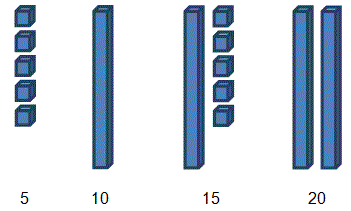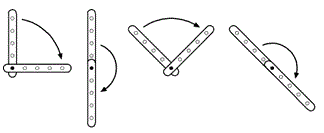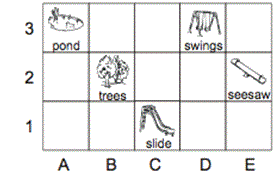Teachers should develop pupils’ numeracy and mathematical reasoning in all subjects so that they understand and appreciate the importance of mathematics. P9
– The national curriculum in England Key stages 1 and 2 framework document September 2013
Connections within Mathematics
Making connections to other topics within this year group
Geometry: properties of shape
Pupils should be taught to:
- identify and describe the properties of 2-D shapes, including the number of sides and line symmetry in a vertical line
- identify and describe the properties of 3-D shapes, including the number of edges, vertices and faces
- identify 2-D shapes on the surface of 3-D shapes [for example, a circle on a cylinder and a triangle on a pyramid]
- compare and sort common 2-D and 3-D shapes and everyday objects.
You could give the children a selection of 3D-shapes, discuss their properties in terms of numbers of faces, sides and vertices and shapes of faces and then ask them to make patterns using their shapes according to their own criteria, for example alternating shapes with rectangular faces and shapes with circular faces. They could show their pattern for other children to guess the rule. You could repeat this idea for pictures of 2D-shapes, discussing properties including symmetry first.
Making connections to this topic in adjacent year groups
Year 1
- describe position, directions and movements, including half, quarter and three-quarter turns
Non statutory guidance
They use the language of position, direction and motion, including: left and right, top, middle and bottom, on top of, in front of, above, between, around, near, close and far, up and down, forwards and backwards, inside and outside.
Pupils make half, quarter and three-quarter turns and routinely make these turns in a clockwise direction.
Year 3
From properties of shape requirements (no Position and Direction in Y3):
- Identify right angles, recognise that two right angles make a half-turn, three make three quarters of a turn and four a complete turn; identify whether angles are greater than or less than a right angle
Cross-curricular and real life connections
Learners will encounter geometry: position and direction:
Within the science curriculum there are opportunities to connect with geometry: position and direction, for example, one of the requirements states that ‘pupils should be taught to: identify and name a variety of plants and animals in their habitats, including micro-habitats. When studying animals, including those in micro-habitats, the children could compare the way different animals move. They could record these in tables or on charts, for example, finding out animals that fly, swim, crawl or run. They could observe how they do this. #Do they travel in straight lines, move in a circular motion or dart about in different directions
Within the geography curriculum, the children are expected to use simple compass directions (North, South, East and West) and locational and directional language (e.g. near and far; left and right) to describe the location of features and routes on a map. Give children the opportunity to identify places on maps and to work out in which direction they need to travel to get from one place to another.
In real life we all make turns and move in different directions in everything we do without thinking about it. You could ask the children to consider turns and moves they make while listening to you. You could ask them to make a diagram of moves they make around the classroom, for example, from the classroom door to where they sit and then to the carpet area. You could also ask them to describe turns they make using the vocabulary of clockwise, anti-clockwise, right and left. You could ask them to think about their journeys to school or to a favourite place. Did they notice the directions from home to their chosen place? Probably not! Ask them to notice and make a record of this next time they make the journey. You could ask them to think about the turns and positions they make when doing simple tasks like turning a door handle or brushing their teeth.




